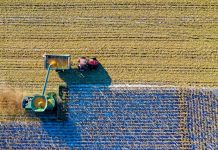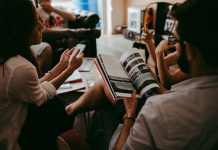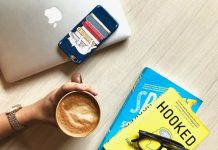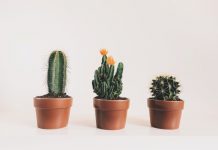Pimples are so in right now.
No, seriously.
If we are to believe all that comes down the runway is on trend, then Moto Guo’s showing at Milan’s Men Fashion Week will give hope to all teenagers struggling with problem skin.
Whether you find it bizarre or inspiring, the choice to accessorize models with red blotches rather than blush speaks to a larger movement in the fashion industry: inclusion.
Even though the pimples as make-up approach was a little out there, and honestly not received well by many critics – one went as far as to dub the makeup technique “human abuse” – you could argue if someone suffering from horrible acne were to be seated front row at Guo’s show, they might feel comforted.
Modeling, what was once a VIP club that only parted its red velvet ropes for pin-thin models with vanilla-skin, has been a bit more accepting recently.
About time.
While a few years ago we were vain enough to celebrate fashion labels adhering to a weight minimum for castings, now we’re seeing real change being made in the modeling world. Everything from body shape to religion is portrayed just as beautifully as Kate Moss.
Some of the biggest names in the modeling world right now, Shaun Ross, Winnie Harlow, and Ashley Graham break the mold big-time.
![Model Shaun Ross [image source: okayafrica.com], crowd ink, crowdink, crowdink.com, crowdink.com.au](http://crowdink.com/wp-content/uploads/2016/07/Model-1.jpg)
Winnie Harlow is the spokeswoman for Spanish brand Desigual and was a finalist on America’s Next Top Model. She also has a skin condition called vitiligo.
Ashley Graham has been featured in Vogue, Harper’s Bazaar, Glamour, Elle and was the first plus sized model to land the cover of the Sports Illustrated Swimsuit edition.
![Model Ashley Graham - Sports Illustrated [image source: businessinsider.com], crowdink, crowd ink, crowdink.com, crowdink.com.au](http://crowdink.com/wp-content/uploads/2016/07/Model-2.jpg)
Now, however, they have achieved success because of what makes them different, not in spite of it.
Body positivity has become a big focal point of fashion campaigns recently, but it is not just skin conditions or weight that have had a chance to share their beauty.
Jillian Mercado, a model with muscular dystrophy, was cast in a Beyonce merchandise photoshoot. Unwilling to simply have her photo taken and call it “change,” Jillian partnered with Instagram to create the hashtag #RunwayForAll, “to highlight fashion’s diversity problem.”
![Model Jillian Mercado [image source: revelist.com], crowd ink, crowdink, crowdink.com, crowdink.com.au](http://crowdink.com/wp-content/uploads/2016/07/Model-3-1.jpg)
Models of different ethnicities from across the global are strutting down the runways in more shows than ever.
Androgynous models are celebrated for their gender-bending looks rather than being shamed for their lack of femininity.
Transgender models like Andreja Pejic are a force to be reckoned with and brands like Dolce & Gabbana and Oscar de la Renta have created high-end hijab lines.
It is truly a revolutionary time to be in the fashion industry, and hopefully one day every young man or woman can open a magazine to find someone inside who inspires them.

![5 Reasons You Should Travel Alone Airplane [image source: chau nguyen/ http://thedevilhatessweatpants.blogspot.com.au ], crowd ink, crowdink, crowdink.com, crowdink.com.au](https://crowdink.com/wp-content/uploads/2016/08/Chau-airplane-218x150.jpg)

























![Victor Boyko for Moto Guo Runway Show Victor Boyko for Moto Guo Runway Show [image source: instyle.com], crowd ink, crowdink, crowdink.com, crowdink.com.au](https://crowdink.com/wp-content/uploads/2016/07/Model-4.jpg)


![5 Reasons You Should Travel Alone Airplane [image source: chau nguyen/ http://thedevilhatessweatpants.blogspot.com.au ], crowd ink, crowdink, crowdink.com, crowdink.com.au](https://crowdink.com/wp-content/uploads/2016/08/Chau-airplane-100x70.jpg)


